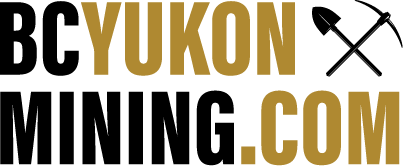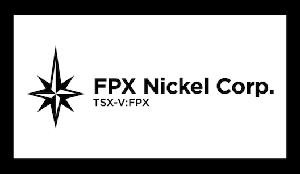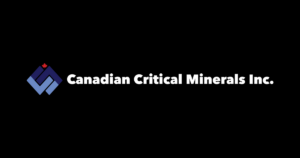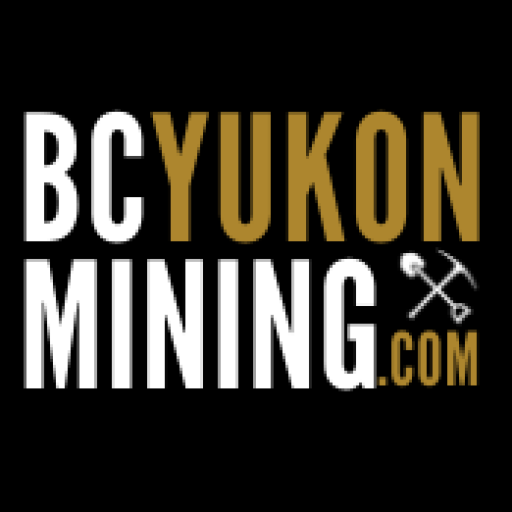| Vancouver, British Columbia: FIREWEED ZINC LTD. (“Fireweed”) (TSXV: FWZ) is pleased to announce the final results from the 2020 drilling at Boundary Zone, Macmillan Pass Project in Yukon, Canada. These results are from Boundary Zone West which was discovered in 2020 with a 360 metre step out hole drilled on a gravity anomaly. It is located 15 road kilometres west of the Tom-Jason deposits (see Map 1) and includes discovery of a new lower sequence hosted in older host rocks than other mineralization found at Macmillan Pass. Boundary Zone has now been traced over a strike length of 630 metres, and both upper and lower sequence mineralization remains open for expansion along strike and down dip. Highlights Hole NB20-009 intersected a dense upper sequence of 4.76% zinc, 0.43% lead and 18.9 g/t silver over 43.7 m including a high grade stratiform zone of 26.35% zinc, 5.21% lead and 53.4 g/t silver over 2.19 m from a vertical depth of 40 m from surface. Hole NB20-009 also intersected a broad lower sequence of 2.08% zinc over 225.0 m including a stratiform zone of 3.69% zinc over 19.0 m and a vein interval of 3.75% zinc over 50.00 m. This is the first discovery of zinc mineralization hosted by lower sequence Ordovician-Silurian rocks in the district. Hole NB20-008 intersected the upper sequence of vein mineralization of 2.48% zinc, 0.74% lead, and 12.5 g/t silver over 111.17 m including two higher grade vein intervals of 6.07% zinc, 1.12% lead, and 27.8 g/t silver over 13.95 m and 4.57% zinc, 0.62% lead, and 15.2 g/t silver over 17.0 m Table 1: Highlight results from the upper and lower sequences at Boundary Zone West. |
 |
CEO Statement Brandon Macdonald, CEO, stated: |
| “These first few holes into the new Boundary West discovery have shown the near-surface upper sequence to have significant widths and grade, not just in the newly discovered massive sulphide zone, but also within the barite-hosted stratiform mineralization which in NB20-009 has shown grade potential rivalling the best of Tom & Jason. The lower sequence at Boundary West shows similar grades to parts of central Boundary Zone over a 225 m intersection and the discovery of mineralization in these older rocks hugely expands the exploration space for new discoveries across the whole 940 km2 property. These initial intersections point to two distinct stratiform mineralized systems at Boundary West that are each underlain by significant thicknesses of vein mineralization. Boundary West remains open along strike and down dip, and may have continuity to central Boundary Zone to the east. This suggests a massive size potential and a staggering metal endowment” |
| NB20-009 and NB20-007 Drill Results These assays complete the results for Fireweed’s new 2020 discovery, Boundary Zone West, approximately 360 m west of the central area of the known Boundary Zone mineralized system. Drill hole NB20-009 was drilled on-section southwest of NB20-004 (Map 2), both targeting a ground-gravity high anomaly surveyed earlier in the season. Both drill holes intersected an upper sequence comprising massive sulphides, Boundary Zone-style vein-hosted and replacement-style mineralization, and stratiform, laminar zinc-lead-silver mineralization similar to that seen at Tom and Jason. NB20-009 also intersected a lower sequence of stratiform, laminar zinc mineralization in older host rocks which were previously not believed to host mineralization in the Macmillan Pass district (Section 1). This lower sequence is hosted in Late Ordovician-Early Silurian host rocks the same age as host rocks at Howard’s Pass, 90 km to the southeast. Its discovery has significant implications for exploration and dramatically increases the area of prospective host rocks in the district. Hole NB20-007 encountered drilling problems at 90 m depth and was re-drilled from the same pad, as NB20-009, intersecting similar geology in the first 90 m. NB20-008 Drill Results Hole NB20-008 was drilled as a step-out hole 85 m west of pre-2020 drilling, between the previously known core of mineralization at Boundary Zone and Boundary Zone West. Like NB20-004 and NB20-009, NB20-008 targeted a ground gravity high anomaly. Sulphide mineralization included breccia and vein-hosted, and replacement-style mineralization similar to mineralization seen in the core of the Boundary Zone system. The true thickness of the stratiform mineralization cannot be accurately estimated yet owing to the variable orientation of nearby oriented core bedding measurements and sparsity of drill holes. The true thickness of the stratiform mineralization in holes NB20-009 and NB20-007 is estimated to be between 20% to 80% of intersected thicknesses. True widths of individual cm- to m-scale veins intersected in NB20-007, NB20-008 and NB20-009 vary greatly from 20% to 95% of intersected thicknesses reflecting the stockwork nature of the veins, and at this early stage of drilling the overall true thickness of Boundary Zone West cannot be accurately estimated until further drilling is completed. Boundary Zone Potential There is no Mineral Resource for Boundary Zone yet and the zone is not included in the current mineral resource estimate for the property (described in Fireweed news release dated January 10, 2018). Boundary Zone has potential to be mined in an open pit with a low strip ratio and to be upgraded through low cost, pre-concentration ore sorting processes (see Fireweed news release dated July 31, 2019). Recent drill results at Boundary Zone along with Tom North Zone and End Zone (see Fireweed news releases dated August 20th and September 10th, 2019; November 15th and 29th, 2018; January 26th, 2021) represent potential for expansion of the large current mineral resources on the property and improvement of Macmillan Pass project economics described in the current Preliminary Economic Assessment (PEA) (see Fireweed news release dated May 23rd, 2018). Boundary Zone Background Boundary Zone mineralization consists of sphalerite-siderite-pyrite and minor galena in veins, stockworks, disseminations, and as replacement of matrix and clasts within coarse clastic rocks. Drilling in 2020 at Boundary Zone West also identified stratiform mineralization similar to the Tom and Jason deposits (see news release dated November 24th, 2020). Historical exploration work at Boundary Zone included geochemical and geophysical surveys as well as 24 drill holes that defined a central 200 x 800 m mineralized zone of zinc (-lead-silver) mineralization within a broader system over 2 km in strike length. Historical length-weighted average intersections1 such as 224.0 m of 2.50% zinc and 0.30% lead, including 4.5 m of 16.40% zinc, are consistent with recent Fireweed drilling and demonstrated potential for bulk tonnage open pit mineralization. In 2019, Fireweed drilled two holes into the central part of the known Boundary Zone mineralization. Both holes intersected wide zones of high-grade replacement-style and vein- and breccia-hosted zinc mineralization, including 100.0 m (true width) of 8.73% zinc from surface including 6.4 m of 43.53% zinc within 230.0 m of 4.51% zinc (see Fireweed news releases dated November 5th, 2019 and January 26th, 2021). In 2020 Fireweed drilled the discovery holes into the Boundary West Zone described in this news release. Notes on sampling, assaying, and data aggregation: The diamond drill core logging and sampling program was carried out under a rigorous quality assurance / quality control program using industry best practices. Drill intersections in this release are all HQ3 (split tube) size core (61.1mm / 2.4-inch diameter) with recoveries typically above 85%. After drilling, core was logged for geology, structure and geotechnical characteristics, marked for sampling, and photographed on site. The cores for analyses were marked for sampling based on geological intervals with individual samples 1.5 m or less in length. Drill core from the Boundary Zone was cut lengthwise in half with a core saw; half-core was sent for assays reported in this news release, and the other half is stored on site for reference. Bulk density was determined on site for the entire length of each sample assayed by measurement of mass in air and mass in water. Sample duplicate bulk density determinations and in-house bulk density standard determinations were each made at a rate of 5%. Since 2017, four in-house bulk density standards (mineralized drill core from the Tom deposit that span a range of densities) have been used and show an acceptable long-term precision. Certified standard masses are used to calibrate the scale balance used for bulk density determinations. A total of 5% assay standards or blanks and 5% core duplicates are included in the sample stream as a quality control measure and are reviewed after analyses are received. Standards and blanks in 2020 drill results to date have been approved as acceptable. Duplicate data add to the long-term estimates of precision for assay data on the project and precision for drill results reported is deemed to be within acceptable levels. Samples were sent to the Bureau Veritas preparation laboratory in Whitehorse, Yukon, where the samples were crushed and a 500 g split was sent to the Bureau Veritas laboratory in Vancouver, B.C to be pulverized to 85% passing 200 mesh size pulps. Clean crush material was passed through the crusher and clean silica was pulverized between each sample. The pulps were analyzed by 1:1:1 Aqua Regia digestion followed by Inductively Coupled Plasma Mass Spectrometry (ICP-ES/ICP-MS) multi-element analyses (BV Code AQ270). All samples were also analyzed for multiple elements by lithium borate fusion and X-ray fluorescence analysis (XRF) finish (BV Code LF725). Over-limit Pb (>25.0%) and Zn (>24.0%) were analyzed by lithium borate fusion with XRF finish (BV Code LF726). Silver is reported in this news release by method AQ270, and zinc and lead are reported by LF725 or LF726. Bureau Veritas (Vancouver) is an independent, international ISO/IEC 17025:2005 accredited laboratory. Results in this news release are length and bulk-density weighted averages as would be used in a Mineral Resource estimate. Readers are cautioned that in Fireweed news releases in prior years, only length weighted assay averages were reported which may result in slightly lower (under reported) average values. Length and bulk-density weighted averages have been reported as these most accurately represent the average metal-content of the intersec tions. Qualified Person Statement< br> Technical information in this news release has been approved by Gilles Dessureau, P.Geo, Vice President Exploration and a ‘Qualified Person’ as defined under Canadian National Instrument 43-101. About Fireweed Zinc Ltd. (TSXV: FWZ) Fireweed Zinc is a public mineral exploration company focused on zinc-lead-silver and managed by a veteran team of mining industry professionals. The Company is advancing its district-scale 940 km2 Macmillan Pass Project in Yukon, Canada, which is host to the 100% owned Tom and Jason zinc-lead-silver deposits with current Mineral Resources and a PEA economic study (see Fireweed news releases dated January 10, 2018, and May 23, 2018, respectively, and reports filed on www.sedar.com for details) as well as the Boundary Zone, Tom North Zone and End Zone which have significant zinc-lead-silver mineralization drilled but not yet classified as mineral resources. The project also includes large blocks of adjacent claims (MAC, MC, MP, Jerry, BR, NS, Oro, Sol, Ben, and Stump) which cover exploration targets in the district where previous and recent work identified zinc, lead and silver prospects, and geophysical and geochemical anomalies in prospective host geology. Additional information about Fireweed Zinc and its Macmillan Pass Zinc Project including maps and drill sections can be found on the Company’s website at www.FireweedZinc.com and at www.sedar.com. ON BEHALF OF FIREWEED ZINC LTD. “Brandon Macdonald” CEO & Director Neither the TSX Venture Exchange nor its Regulation Services Provider (as that term is defined in the policies of the TSX Venture Exchange) accepts responsibility for the adequacy or accuracy of this release. |









